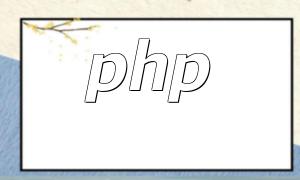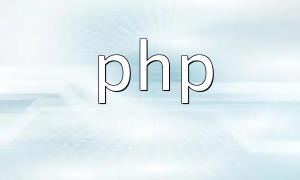PHP is one of the most popular backend web programming languages, used to create dynamic and interactive websites. However, PHP code can be vulnerable to various security threats. Implementing best practices is essential to protect your web applications.
Input validation is a key step to prevent SQL injection and other malicious inputs. PHP provides functions like filter_var() and preg_match() for input filtering.
$username = filter_var($_POST['username'], FILTER_SANITIZE_STRING);
$password = filter_var($_POST['password'], FILTER_SANITIZE_STRING);
Output sanitization prevents cross-site scripting (XSS) attacks by converting user inputs into a safe format. Using htmlspecialchars() effectively escapes special characters.
echo htmlspecialchars($comment);
Sessions provide a secure way to store user data. PHP uses session_start() to initiate a session and the $_SESSION array to manage data.
session_start();
$_SESSION['userID'] = 123;
Cross-Site Request Forgery (CSRF) attacks can perform malicious actions without the user's knowledge. Generating random tokens helps prevent CSRF attacks.
$csrfToken = bin2hex(openssl_random_pseudo_bytes(16));
$_SESSION['csrfToken'] = $csrfToken;
Database connections are prone to SQL injection attacks. Using PDO ensures secure database operations.
$dsn = 'mysql:host=localhost;dbname=mydatabase';
$username = 'root';
$password = 'secret';
$db = new PDO($dsn, $username, $password);
Passwords and sensitive data should use strong encryption algorithms such as bcrypt or Argon2. PHP provides password_hash() and password_verify() for encryption and verification.
$hashedPassword = password_hash('myPassword', PASSWORD_BCRYPT);
Regularly updating PHP and third-party libraries is crucial to patch security vulnerabilities and maintain website security.
Choosing a secure web server (like Nginx or Apache) and configuring it properly adds an extra layer of protection and prevents common attacks.
The following example demonstrates how to combine best practices to secure a login form:
<?php
session_start();
// Input validation
$username = filter_var($_POST['username'], FILTER_SANITIZE_STRING);
$password = filter_var($_POST['password'], FILTER_SANITIZE_STRING);
// Output sanitization
$username = htmlspecialchars($username);
$password = htmlspecialchars($password);
// Prevent CSRF attacks
$csrfToken = $_POST['csrfToken'];
if (!isset($csrfToken) || $csrfToken !== $_SESSION['csrfToken']) {
die('Invalid CSRF token!');
}
unset($_SESSION['csrfToken']);
// Database connection and query
$dsn = 'mysql:host=localhost;dbname=mydatabase';
$username = 'root';
$password = 'secret';
$db = new PDO($dsn, $username, $password);
$stmt = $db->prepare('SELECT * FROM users WHERE username = ?');
$stmt->execute([$username]);
// Authentication and session management
$user = $stmt->fetch(PDO::FETCH_ASSOC);
if ($user && password_verify($password, $user['password'])) {
$_SESSION['userID'] = $user['id'];
$_SESSION['username'] = $user['username'];
header('Location: dashboard.php');
} else {
echo 'Login failed!';
}
?>
By following these practices, you can significantly improve the security of PHP applications and protect your website from common threats.









